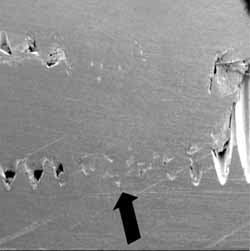Effect of changes in implants and cyclic loading in the abutment screw loosening.

All claims expressed in this article are solely those of the authors and do not necessarily represent those of their affiliated organizations, or those of the publisher, the editors and the reviewers. Any product that may be evaluated in this article or claim that may be made by its manufacturer is not guaranteed or endorsed by the publisher.
Aim The aim of this study was to evaluate the effects of internal torque at external hex implants and cyclic loading in the abutment screw loosening.
Materials and methods Twenty external hex implants associated with estheticone abutments were divided into two groups: ten conventional, and ten internal torque. Torque loss were evaluated with digital torquemeter before and after 74,000 cycles of cyclic loading at 4.4 Hz frequency. One sample of implant/abutment assembly of each group was analyzed by scanning electron microscope. The data were analyzed by linear mixed model with a significance level of 5%.
Results All abutments presented torque loss. Prior to cycling loading, torque loss was 31.51% for conventional implants and 28.14% for internal torque ones. After cyclic loading, torque loss increased significantly for both conventional (59.27%, p=0.002) and internal torque (62.22%, p<0.05) implants sets. There was no significant difference between the implants before (p=0.742) and after (p=0.805) cyclic loading.
Conclusion Changes in external hexagon implant for internal torque connection did not interfere with abutment screw loosening.
The Journal of Osseointegration has chosen to apply the Creative Commons Attribution NonCommercial 4.0 International License (CC BY-NC 4.0) to all manuscripts to be published.


 https://doi.org/10.23805/JO.2020.12.02.13
https://doi.org/10.23805/JO.2020.12.02.13







